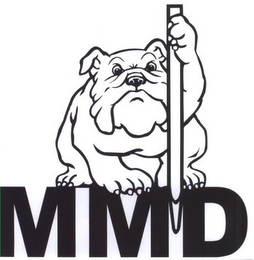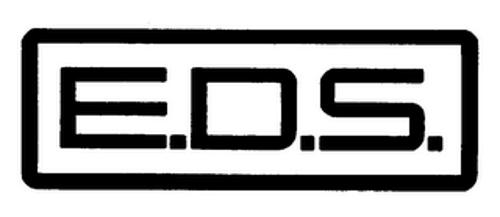 Nikon Corporation filed a trademark application to register the mark MMD for the goods of (1) laser scanners for industrial inspection and for geometrical measurement, and not for use with land surveying equipment, and (2) software for collection and interpretation of data in the operation of laser scanners, not for use with land surveying equipment. The USPTO trademark examining attorney refused registration based on prior registration no. 4137026 of the mark MMD (and dog design, shown to the right of this paragraph) for land surveying equipment.
Nikon Corporation filed a trademark application to register the mark MMD for the goods of (1) laser scanners for industrial inspection and for geometrical measurement, and not for use with land surveying equipment, and (2) software for collection and interpretation of data in the operation of laser scanners, not for use with land surveying equipment. The USPTO trademark examining attorney refused registration based on prior registration no. 4137026 of the mark MMD (and dog design, shown to the right of this paragraph) for land surveying equipment.
The Trademark Trial and Appeals (Board) found that the marks were similar because while the prior registration contained a graphical dog, words “are normally accorded greater weight because the words are likely to make an impression upon purchasers.”
The Board also found the goods of both marks were related because evidence showed that non-land surveying laser scanners are sold by the same entities that provide land surveying instruments.
However, the Board found that Nikon’s laser scanners for industrial inspection and the registrant’s surveying equipment move in different channels of trade.
The Board also found that laser scanners and surveying instruments are purchased by customers that exercise a high degree of care in purchasing. Where customers take great care in purchasing, confusion is less likely.
The Board concluded that the goods will not be encountered by the same consumers under circumstances likely to give rise to the mistaken belief that the products emanate from the same source. Therefore, the Board reversed the Examiner’s refusal and allowed Nikon’s application for the MMD mark to proceed to registration.
By amending the description to exclude land surveying equipment, Nikon was able to convince the Board that the goods were sold in different channels of trade despite the fact the goods were related. If Nikon did not add the exclusion of land surveying equipment to the description, it would have lost this appeal. Sometimes narrowing the description of good/services is an important step to avoid a conflict with a nearly identical mark.
 EDS versus EDS. One company that used the EDS mark opposed another company’s registration of the mark EDS. Identical trademarks. Sales to the same customers. But no conflict. How?
EDS versus EDS. One company that used the EDS mark opposed another company’s registration of the mark EDS. Identical trademarks. Sales to the same customers. But no conflict. How?